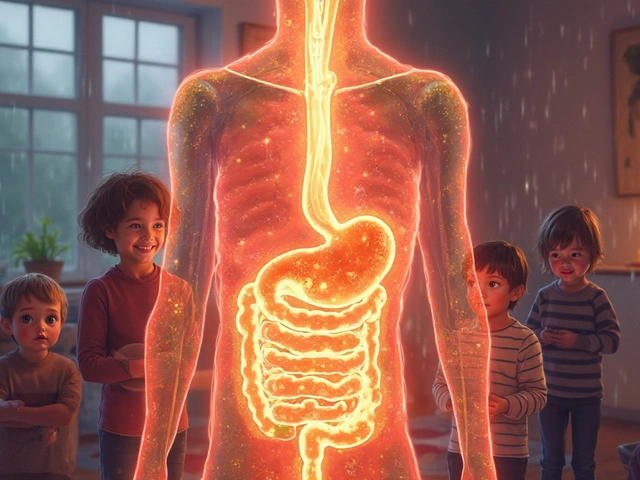
As more people are seeking alternative ways to support their mental health, creative arts therapies have gained significant attention. These therapies harness the healing power of creative processes to help individuals express themselves, manage stress, and improve their overall mental well-being.
Creative arts therapies come in many forms, including art therapy, music therapy, dance/movement therapy, and drama therapy. Each form utilizes different creative expressions to help individuals cope with various mental health challenges. By engaging in these therapeutic activities, people can unlock new ways of understanding and addressing their emotions and experiences.
- Introduction to Creative Arts Therapies
- Types of Creative Arts Therapies
- Benefits of Creative Arts Therapies
- Real-world Applications
Introduction to Creative Arts Therapies
Creative arts therapies have become an intriguing field within mental health over recent years. These forms of therapy rely on using creative processes to help people understand, express, and manage their emotions. But what exactly are creative arts therapies, and how do they work?
The term encompasses a variety of therapeutic approaches, including art therapy, music therapy, dance/movement therapy, and drama therapy. Each type employs different artistic mediums to address emotional and psychological needs. Art therapy might involve painting or drawing, creating a visual language for feelings that words can't capture. Music therapy uses melodies, rhythms, and singing to help individuals connect deeper with their emotions.
Dance/movement therapy integrates physical movement with emotional processing, potentially making it an excellent choice for those who find verbal expression challenging. Drama therapy, on the other hand, uses role-playing and theatrical techniques to explore personal stories and internal conflicts. These therapies share the common goal of harnessing creativity to promote mental wellness.
The effectiveness of these therapies is supported by a growing body of research. According to the American Art Therapy Association, creative arts therapies can significantly reduce symptoms of anxiety, depression, and trauma. In one study published in the Journal of Clinical Psychology, participants who engaged in art therapy showed notable improvements in mood and stress reduction.
"Creativity is allowing yourself to make mistakes. Art is knowing which ones to keep." - Scott AdamsIncorporating creative arts into therapy allows for a non-linear approach to healing. Traditional talk therapies can sometimes feel limiting for individuals unable to articulate their experiences. By contrast, creative arts therapies offer a more flexible, intuitive path to wellness. This makes them especially valuable for children, adolescents, and those with conditions that affect verbal communication.
Recognizing the importance of these therapies, many modern healthcare providers and mental health professionals are incorporating them into their practices. It's not just about creating something beautiful; it's about using the process of creation to heal. Patients often describe feeling more centered, less anxious, and better understood after sessions. This holistic approach considers both the mind and the body, making it a well-rounded option for therapeutic intervention.

Types of Creative Arts Therapies
Creative arts therapies encompass a wide range of practices that use various forms of art to promote mental wellness. Each type offers unique benefits by leveraging different creative outlets, making them accessible to individuals with diverse preferences and needs. These therapies can be effective for all age groups, from children to older adults, and are used in various settings, including hospitals, schools, and private practices.
Art Therapy is one of the most popular forms. It involves using visual art, such as drawing, painting, and sculpting, to help individuals explore their emotions and express themselves in ways they might not be able to with words alone. Art therapy can help people process trauma, reduce anxiety, and improve self-esteem. According to the American Art Therapy Association, engaging in creative processes activates different areas of the brain, which can be therapeutic for those dealing with psychological issues.
Music Therapy uses the power of music to address emotional, cognitive, and social needs. This can include listening to music, playing instruments, singing, or songwriting. Music has a unique ability to evoke emotions and memories, making it a powerful tool for therapists. Studies have shown that music therapy can reduce symptoms of depression and anxiety, improve communication skills, and even enhance physical rehabilitation efforts. As Oliver Sacks once noted, "Music can lift us out of depression or move us to tears—it is a remedy, a tonic, orange juice for the ear."
Dance/Movement Therapy utilizes body movement to support emotional, cognitive, and physical integration. This type of therapy is grounded in the belief that the body and mind are interconnected. By engaging in dance and movement, individuals can release tension, express emotions, and connect more deeply with themselves and others. The American Dance Therapy Association highlights that dance therapy can improve body image, self-esteem, and overall well-being. It's particularly effective for those who find verbal communication challenging.
Drama Therapy allows individuals to use storytelling, role-playing, and acting to explore and address psychological issues. By stepping into different roles and scenarios, participants can gain new perspectives on their situations and emotions. Drama therapy can foster social skills, build self-confidence, and help with emotional regulation. It is often used in group settings, which can provide additional benefits such as peer support and community building.
These types of creative arts therapies not only offer unique methods for addressing mental health but also make the therapeutic process engaging and enjoyable. People from all backgrounds are finding that integrating creativity into their mental health journey can lead to profound and lasting changes.

Benefits of Creative Arts Therapies
Creative arts therapies offer numerous benefits for individuals struggling with mental health issues. These therapies use creative mediums like drawing, painting, music, and dance as a form of expression. This can be particularly helpful for those who find it difficult to articulate their feelings verbally. Through creative activities, people are able to explore and understand their emotions in a safe and nurturing environment.
One significant benefit is the ability to reduce stress and anxiety. Engaging in creative activities has been shown to lower cortisol levels, which is the body's primary stress hormone. When people immerse themselves in creating art or music, they often experience a state of 'flow,' where they lose track of time and focus solely on the activity at hand. This immersive state can lead to a sense of calm and well-being.
Creative arts therapies also improve self-esteem and confidence. When individuals complete a piece of art or perform a musical piece, they often feel a sense of accomplishment. Over time, these small successes can build confidence and enhance self-worth. This is particularly important for those who have experienced trauma or have low self-esteem as a result of mental health conditions.
Another benefit is the enhancement of social skills. Participating in group creative arts therapy sessions provides an opportunity for individuals to interact with others in a non-judgemental space. These interactions help to develop communication skills, empathy, and the ability to work collaboratively. For example, in a drama therapy session, individuals might work together to create a play or a skit, which can foster a sense of community and support.
Additionally, creative arts therapies can serve as a powerful tool for processing and healing from trauma. Art, in particular, can be used to externalize and make sense of traumatic experiences. For example, a person who has experienced trauma might express their feelings through drawing or painting, which can be less intimidating than talking about the experience. This process can lead to greater insights and emotional release.
There is also growing evidence to suggest that creative arts therapies can enhance cognitive function. Engaging in these activities can stimulate brain regions involved in memory, attention, and problem-solving. For instance, music therapy has been found to improve memory and cognitive flexibility, particularly in older adults.
"Art therapy is particularly effective because it provides an alternate language for expressing feelings and experiences, unlocking emotions that might be difficult to verbalize," says Dr. Cathy Malchiodi, a leading expert in the field of art therapy.
Lastly, creative arts therapies can lead to improved physical health. For example, dance/movement therapy can help to increase physical activity, improve coordination, and promote physical well-being. Music therapy has also been shown to lower heart rate and blood pressure, leading to better cardiovascular health over time.

Real-world Applications
Creative arts therapies have found a place in various settings, from hospitals and schools to community centers and private practices. These therapies offer flexible and dynamic approaches tailored to meet the unique needs of individuals and groups. For instance, in hospital settings, art therapy has shown remarkable results in helping patients manage pain, stress, and anxiety during medical treatments. Patients can express emotions they might find difficult to vocalize through painting or drawing, which can foster a sense of relief and empowerment.
In schools, music therapy is used to support children with special needs, such as autism or ADHD. Music therapists work with students to improve their social skills, communication, and academic performance. Songs, musical instruments, and rhythmic activities are engaging and can hold the attention of children who might struggle with traditional learning methods. A study by the Journal of Music Therapy reported that children with autism who participated in music therapy sessions showed significant improvement in social interaction and communication skills.
Community centers and elderly care facilities often incorporate dance/movement therapy into their programs to maintain physical activity and mental well-being among older adults. This form of therapy isn't just about dancing; it focuses on body movement to express and process emotions, which can be particularly beneficial for older adults dealing with grief, depression, or cognitive decline. Movement activities help improve balance, coordination, and mood, creating a positive impact on overall health.
Drama therapy has proven effective in mental health clinics and rehabilitation centers, providing a space for individuals to explore complex emotions and reframe traumatic experiences. Through role-playing, storytelling, and improvisation, participants can gain new perspectives on their issues and develop coping strategies. According to the North American Drama Therapy Association, engaging in drama therapy can reduce symptoms of PTSD, anxiety, and depression by allowing individuals to practice new behaviors in a safe, therapeutic environment.
Additionally, there's growing recognition of creative arts therapies in corporate wellness programs. Companies are investing in art and music therapy workshops to boost employee morale, reduce stress, and foster team-building. Employees who engage in creative activities report feeling more relaxed, focused, and connected to their peers. This can lead to increased productivity and a more positive workplace culture. Organizations like the American Art Therapy Association advocate for integrating these therapies into standard wellness initiatives, emphasizing their role in enhancing mental health and job performance.
Creative arts therapies offer a powerful and holistic approach to mental health care. By embracing these innovative methods, we can provide more diverse and effective support for individuals facing mental health challenges. The real-world applications of these therapies are vast and continue to expand, proving that creativity can be a cornerstone of healing and well-being.





